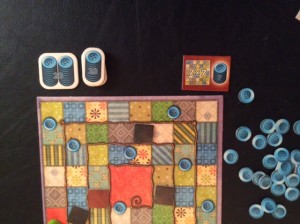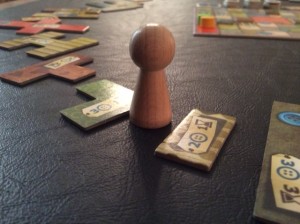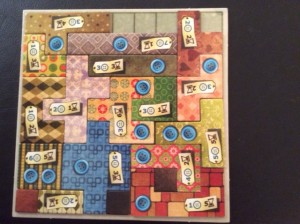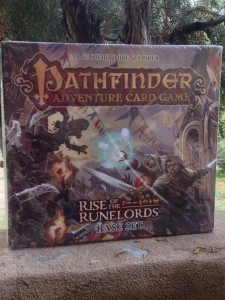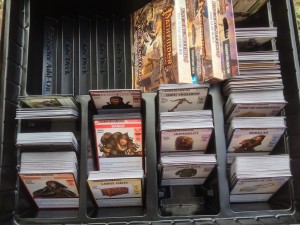Patchwork
Patchwork is a game that would have sailed on by with out me paying any attention to it if I hadn’t caught my wife playing Tetris one day, known her love of sewing and my passion for board games. I gave it a chance.
Its designed by Uwe Rosenberg and is brilliant in my mind for its ease and simplicity. Yes, we did have some initial difficulty in the first play; this isn’t anything unusual for us, but we got quickly beyond that and entered the realm of nearly playing it daily for one to two plays. This is a new experience for us.
Board games aren’t our mutual passion. She humors me, thank goodness, by playing them. Often the plays can be torturous endeavors for her, for me moments of social pleasure. Keep in mind that there are very few games that we play together where I win all the time or she looses all the time, as we really love different types of games and I even play casino games sometimes in the olympic kingsway casinos to make some buck online. Usually, it’s the opposite. She wins. She wins a lot. Games don’t bore her, they just aren’t on her radar. I think now, after being together for over seven years and seeing the effect that they have had on me she pays attention to them. Patchwork instills a sense of passion in her and nicely it has the same effect with me.
It’s a two player game and plays for about thirty minutes. We play in on a standard card-table(no irony intended) and it almost covers every square inch of the table.
You start by giving each player a player board, five buttons, and putting the turn track board in a easily accessible place between you two. Then you spread out the patches or Tetris looking pieces in a random circle around the turn tracking board. There is large wooded pawn that you place in the first clockwise position next to a 2×1 tile. This is the only tile like this in the game.
The first player in this game is the last person who last handled a needle. A little quirky but fits the theme of the game.
Each player on their turn takes a tile that they pay for with their buttons and move the marker on the turn tracking board the cost of the piece each turn. The turn tracking board has two different places on it where unique actions take place. They have a button where when you pass it, you get the number of buttons that your patches have on them as a reward- the buttons also symbolize your points for purposes of scoring. The other special space on the turn tracking board is the patch, which is a single space “patch” – only available to the first player that passes over it- the patch has to be used immediate but usually makes a huge difference in the final score.
This is repeated until both players reach the center of the board where you tally your score, the catch which can sink a successful game is that for each empty spot on your board you have to pay two buttons. It hasn’t been uncommon for us to have a game where both players were in the negative.
As of now, I don’t believe there is a only play mode but I think it would work really well on a platform like a iPad or possible smartphone.
Overall, I highly recommend this game to just about anyone, the ages of the intended players aren’t important but several consecutive game plays may not hold everyones attention. We’re well into out 20+ game plays, in fact, I think we’ll play a game tonight…
Pros: Time of play, ease of rules, player interaction with a goal. Tetris motif. Something my wife would want to play, maybe? (Good news, she loves it!)
Cons: Over too quickly. Amount of space to set up.
Modes of play: 2 player




